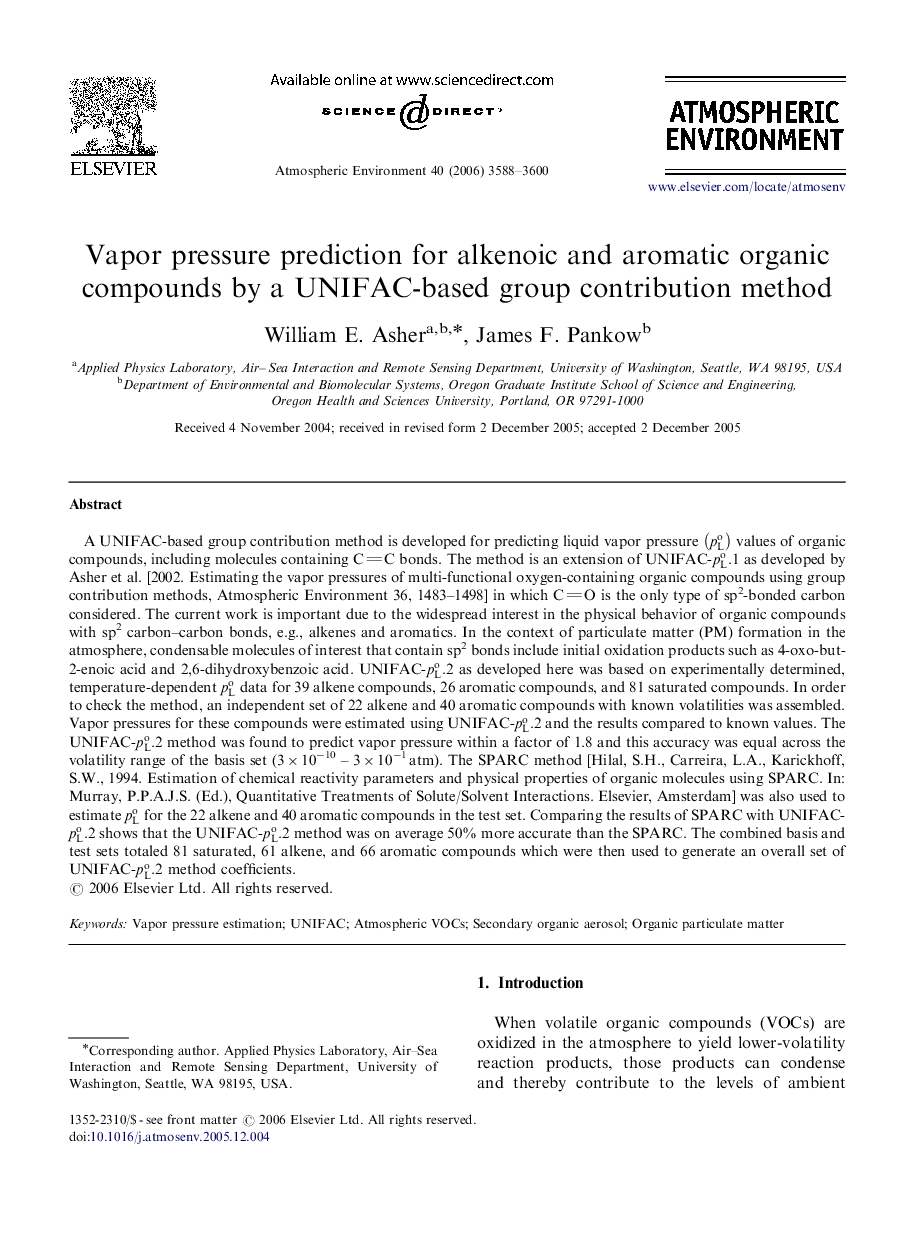| کد مقاله | کد نشریه | سال انتشار | مقاله انگلیسی | نسخه تمام متن |
|---|---|---|---|---|
| 4444720 | 1311252 | 2006 | 13 صفحه PDF | دانلود رایگان |

A UNIFAC-based group contribution method is developed for predicting liquid vapor pressure (pLo) values of organic compounds, including molecules containing CC bonds. The method is an extension of UNIFAC-pLo.1 as developed by Asher et al. [2002. Estimating the vapor pressures of multi-functional oxygen-containing organic compounds using group contribution methods, Atmospheric Environment 36, 1483–1498] in which CO is the only type of sp2-bonded carbon considered. The current work is important due to the widespread interest in the physical behavior of organic compounds with sp2 carbon–carbon bonds, e.g., alkenes and aromatics. In the context of particulate matter (PM) formation in the atmosphere, condensable molecules of interest that contain sp2 bonds include initial oxidation products such as 4-oxo-but-2-enoic acid and 2,6-dihydroxybenzoic acid. UNIFAC-pLo.2 as developed here was based on experimentally determined, temperature-dependent pLo data for 39 alkene compounds, 26 aromatic compounds, and 81 saturated compounds. In order to check the method, an independent set of 22 alkene and 40 aromatic compounds with known volatilities was assembled. Vapor pressures for these compounds were estimated using UNIFAC-pLo.2 and the results compared to known values. The UNIFAC-pLo.2 method was found to predict vapor pressure within a factor of 1.8 and this accuracy was equal across the volatility range of the basis set (3×10−10 – 3×10−1 atm). The SPARC method [Hilal, S.H., Carreira, L.A., Karickhoff, S.W., 1994. Estimation of chemical reactivity parameters and physical properties of organic molecules using SPARC. In: Murray, P.P.A.J.S. (Ed.), Quantitative Treatments of Solute/Solvent Interactions. Elsevier, Amsterdam] was also used to estimate pLo for the 22 alkene and 40 aromatic compounds in the test set. Comparing the results of SPARC with UNIFAC-pLo.2 shows that the UNIFAC-pLo.2 method was on average 50% more accurate than the SPARC. The combined basis and test sets totaled 81 saturated, 61 alkene, and 66 aromatic compounds which were then used to generate an overall set of UNIFAC-pLo.2 method coefficients.
Journal: Atmospheric Environment - Volume 40, Issue 19, June 2006, Pages 3588–3600